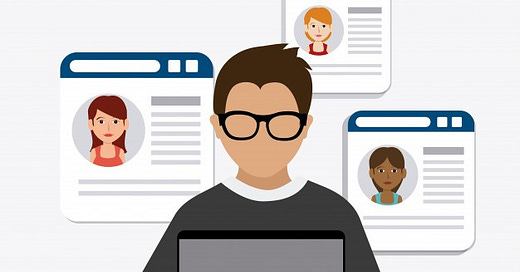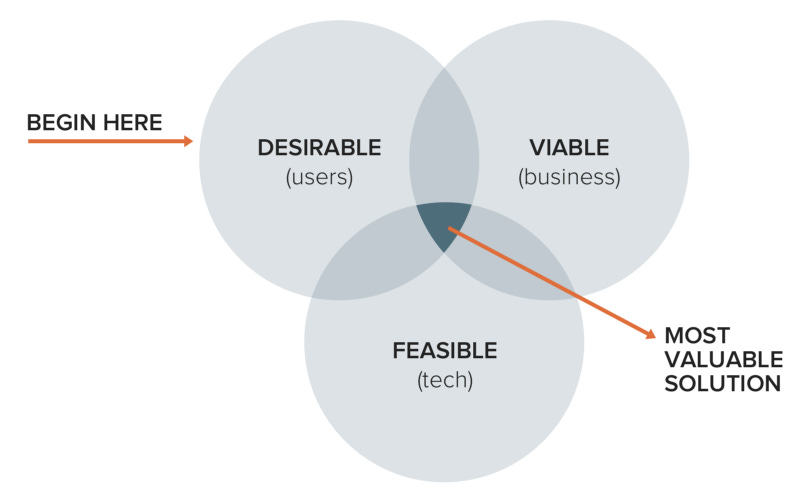What is User-Centered Design?
Creating products and systems with this orientation is to create more efficient, satisfying, and user-friendly experiences.
Creating products and systems with this orientation is to create more efficient, satisfying, and user-friendly experiences.
It is quite common, since the beginning of the technological era, to create extremely complex systems, with a focus on business objectives, far-reaching functionalities, and all the available technological capacity. But without taking into account the most important part of the process, which is the end-user.
These systems and programs may not be a failure. However, as growth grows, they become large patchwork quilts that end up being abandoned by users.
However, this is not the main reason why the user should be the center of attention in a project, what we know as User-Centered Design.
As growth grows, they become large patchwork quilts that end up being abandoned by users .
Creating products and systems with this orientation is to create more efficient, satisfying, and user-friendly experiences. What can, yes, favor sales and customer retention.
Rather than requiring the user to adapt their attitudes and behaviors to learn how to use a tool, User-Centered Design creates systems that relate to what the user believes, how he acts and sees the world.
The Importance of User-Centered Design
User-Centered Design (UCD) is a design process that focuses on the needs and requirements of users.
The constant use of human factors, ergonomics, usability engineering, and other techniques are what keep UCD revolving around users. The objective is to produce highly usable and accessible systems, aiming at user satisfaction, avoiding any possible negative effects on health, safety, and performance.
The UCD is an iterative design approach, which aims to develop an understanding of users’ needs, doing so through a mix of investigative (eg, surveys and interviews), creative (eg, brainstorming), and tools.
The UCD must always involve users strongly in all phases of design and evaluation. In general, each iteration of the UCD approach involves four distinct phases:
Specify the context of use: at this stage, designers identify the personas who will use the product, what they will use it for, and under what conditions they will use it;
Specify requirements: designers identify any business requirements or user goals that must be met for the product to be successful;
Create design solutions: This part of the process can be done in stages, building from a general concept to a complete design;
Evaluation: At this stage, the evaluation is as integral as the quality test is for good software development. Ideally, this assessment is done through usability tests with real users.
From here, new iterations of these four phases are performed, until the results of the evaluation are satisfactory.
In addition, there are many variations of these processes, as they can be incorporated into methodologies such as Waterfall and Agile. What determines the most suitable processes is the context of what is being developed, the requirements, the team, the time, and the environment.
During the UCD process, the project is based on an explicit understanding of users, tasks, and environments. The whole process aims to capture and address the entire user experience; therefore, the team must include professionals from various fields (for example, communicators, psychologists, software, and hardware engineers), as well as other specialists, stakeholders, and of course, the users themselves.
Evaluations of produced projects can be carried out by specialists using design guidelines and criteria. However, a crucial issue is that the UCD must — at some point — involve users, and it must also involve monitoring long-term use.
Why is it important to have User-Centered Design processes?
From the user’s point of view, usability is important because it can make the difference between using a tool accurately and completely, enjoying the process; or fail and get frustrated.
From the developer’s point of view, usability is important because it can mean the difference between the success or failure of a system.
From a business point of view, software with little usability can reduce the productivity of work teams to a level of performance worse than if without the system.
In all cases, lack of usability can cost time, effort, and money.
When they have a choice, people tend to buy systems that are easier to use, even if they don’t know what usability means.
How to measure the success of a User-Centered Design process?
The iterative process, which progressively improves the design, constantly evaluating the stages of the project, is a primary way to increase usability.
In this way, the design and development teams are always incorporating user feedback into the system to improve the system and its usability. Of course, it is always important to test systems and tools with real users.
Concentrating efforts on User-Centered Design processes are possibly the only way to achieve a high level of usability.
However, the budget of the company or client does not always allow for an ideal approach. But, there are numerous tools to find out who the primary users are, how they interact with the systems, and what tasks they must perform. Among the alternative methods, there are tests on prototypes of the system, cognitive modeling, and usability audits carried out by specialists.
I hope these tips can help you develop more and more user-centric projects.
Applauding is love because it encourages the author. If you liked this text, you can applaud 👏👏 👏.
In addition, my deep gratitude for staying with me here. Leave your feedback in the comments below, it is essential to keep evolving with each new content!









